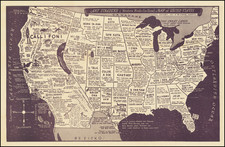Fantastic Allegorical Temperance Lithograph.
This rare allegorical temperance landscape was created by Stedman Wright Hanks for the Massachusetts Temperance Alliance in 1865. This is an updated version of a similar map created by Hanks in 1863.
Created to illustrate the dangers of alcohol, the image provides a remarkable look at the journey from normalcy to damnation, riding the rail of the demon drink.
The American temperance movement used this type of robust allegorical image to illustrate and promote the idea that alcohol was a train ride to destruction, hence the "Black Valley Rail Road." Passengers embark in the "region of churches and fountains" below a depiction of angels. They proceed through a few stops suggesting moderate consumption (Tippleton, Toppersville) to Drunkards Curve, where "ambulances will be used." Thence the train is designated an "Express," with the route including Beggarstown, Gamblersville, Robbers Den, Prisonton, Demonland, Maniacville and finally, Destruction. "Accidents by collisions entirely avoided, as no up trains are run over the road."
In 1879, the father of the Black Valley Rail Road wrote that "more than three millions . . . have been called for, not including the altered forms of it surreptitiously published by the N. Y. Vinegar Bitters Co."
The Black Valley Railroad temperance lecture was one of the most impactful of the Temperance movement. Its imagery illustrating the descent into the perils of alcoholism via the drunkard’s curve, the last stopping-place on the journey. In the saloon, with revelers in a "Licenced" car, drunken passengers arrayed below a man waiving a red flag and the devil feeding grains into the distillery fueling the train.
At the bottom left, some travelers are seen leaving the train and boarding the Free stage back to Cold Stream River, with a well-dressed gentleman welcoming a young family. Another gentleman is helping the disabled and dying into an Ambulence, having been thrown out along the Track of the Road.
As noted on the Huntington Library / Jay Last Collection on-line description:
Image of a mock train schedule poster promoting temperance by warning of the effects of alcohol and smoking; train with "Alcohol" locomotive and bar car showing people drinking inside pulls away from "Drunkards Curve" station towards a dark area full of demons; horse-drawn ambulance vehicles pick up passengers who have disembarked; diagrams of a stomach lining in various states of decline due to alcohol consumption at bottom left and right; train stops at destinations "Sippington" through to "Destruction" at left and right of image.
Context of American temperance movement in allegorical prints
The desire for self-improvement - material as well as moral - permeated American society in the mid-nineteenth century, encouraging reforms ranging from women's rights to the abolition of slavery. But it was the temperance movement that was widely promoted through the graphic arts... The fate of the drunkard was more directly and bluntly conveyed in the many prints published by engravers and lithographers after 1820. Most favored a sequence of images, reminiscent of Hogarth, to depict the tragic consequences of intemperance - American Allegorical Prints: Constructing an Identity, Yale University Art Gallery (1996), page 12.
States of the Print and Rarity
There are several variant states of the image, all of which seem to have been printed by the New England Steam Printing Company.
- Entered according to act of congress, in the year 1865 S.W. Hanks, in the clerks office of the district court of Massachusetts.
- Extra Text line below copyright, crediting "J.N. Stearns National Temperance Society 172 William St. New York."
A number of smaller images were also made copying the artwork at the center of the image.
Stedman Wright Hanks, a congregational minister, was also an ardent temperance advocate. He was a founding member of the Temperance Alliance.











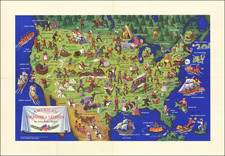
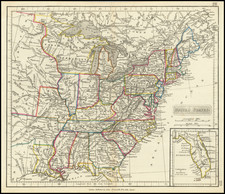
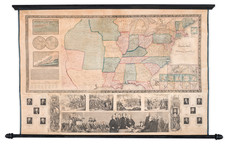
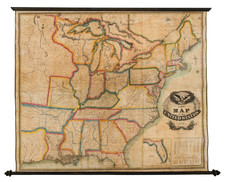
![[Grotto of Tethys -- Versailles] Le Soleil qui se couche dans la mer / Le Globe de la Terre, divise en six parties.](https://storage.googleapis.com/raremaps/img/small/79606.jpg)
